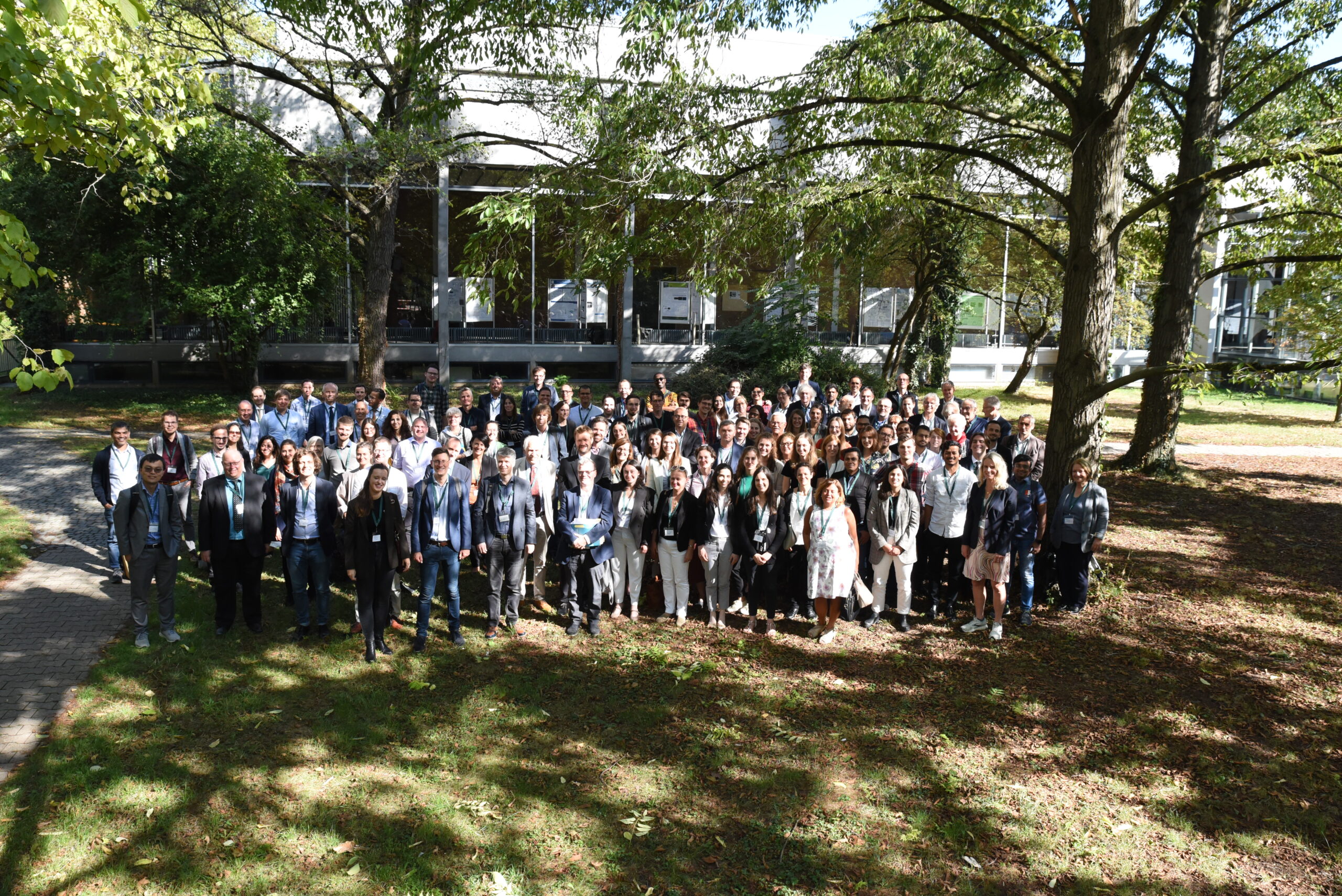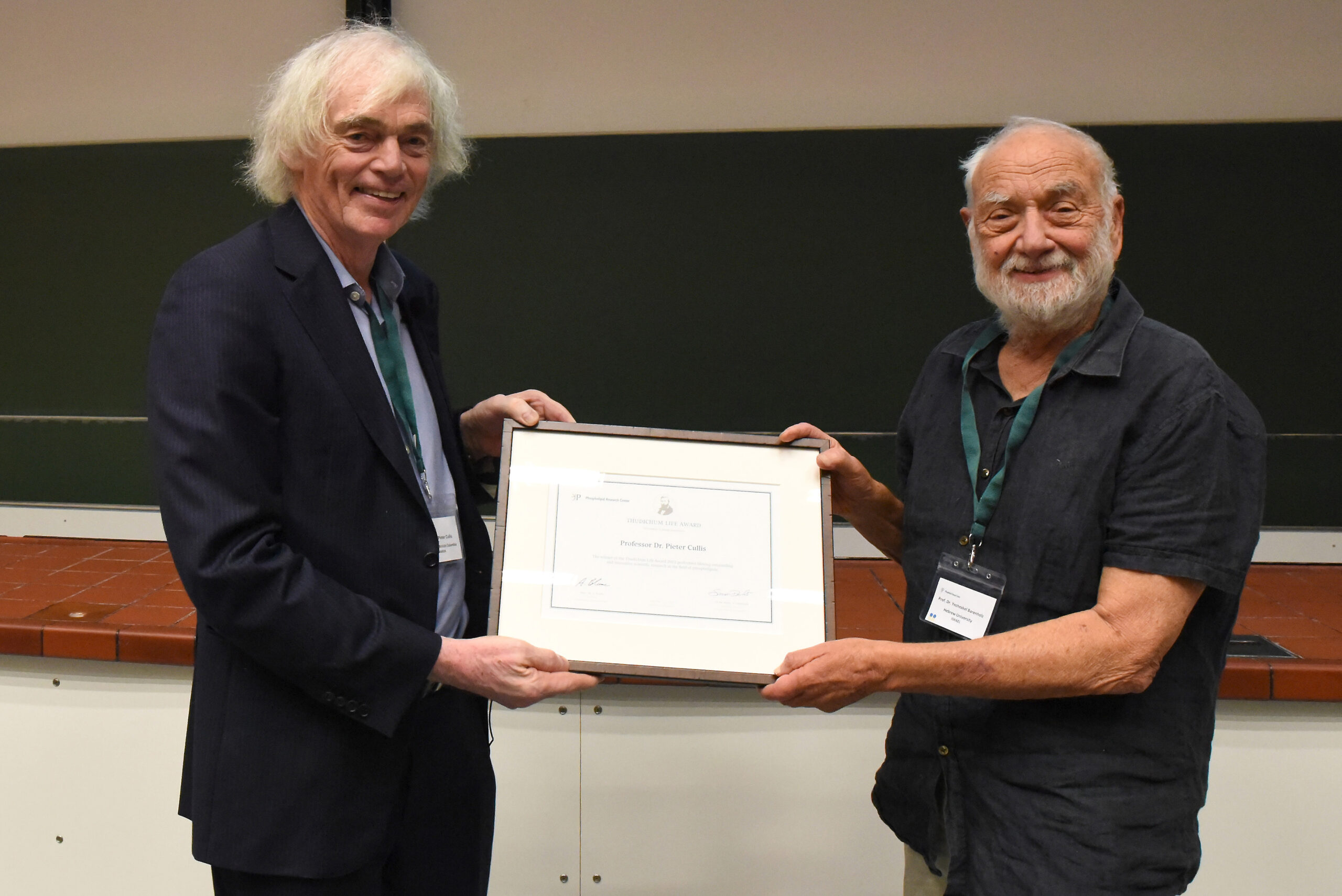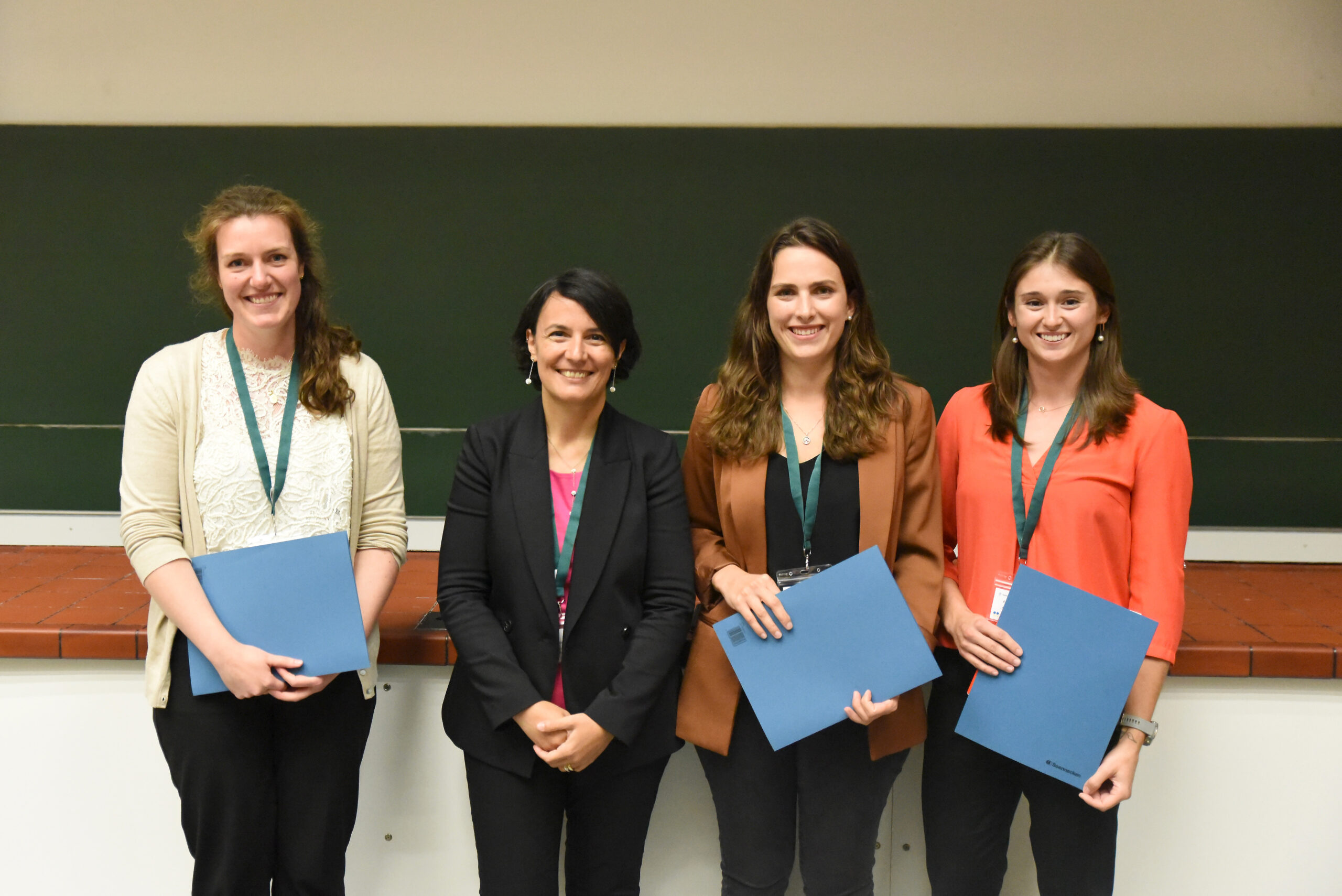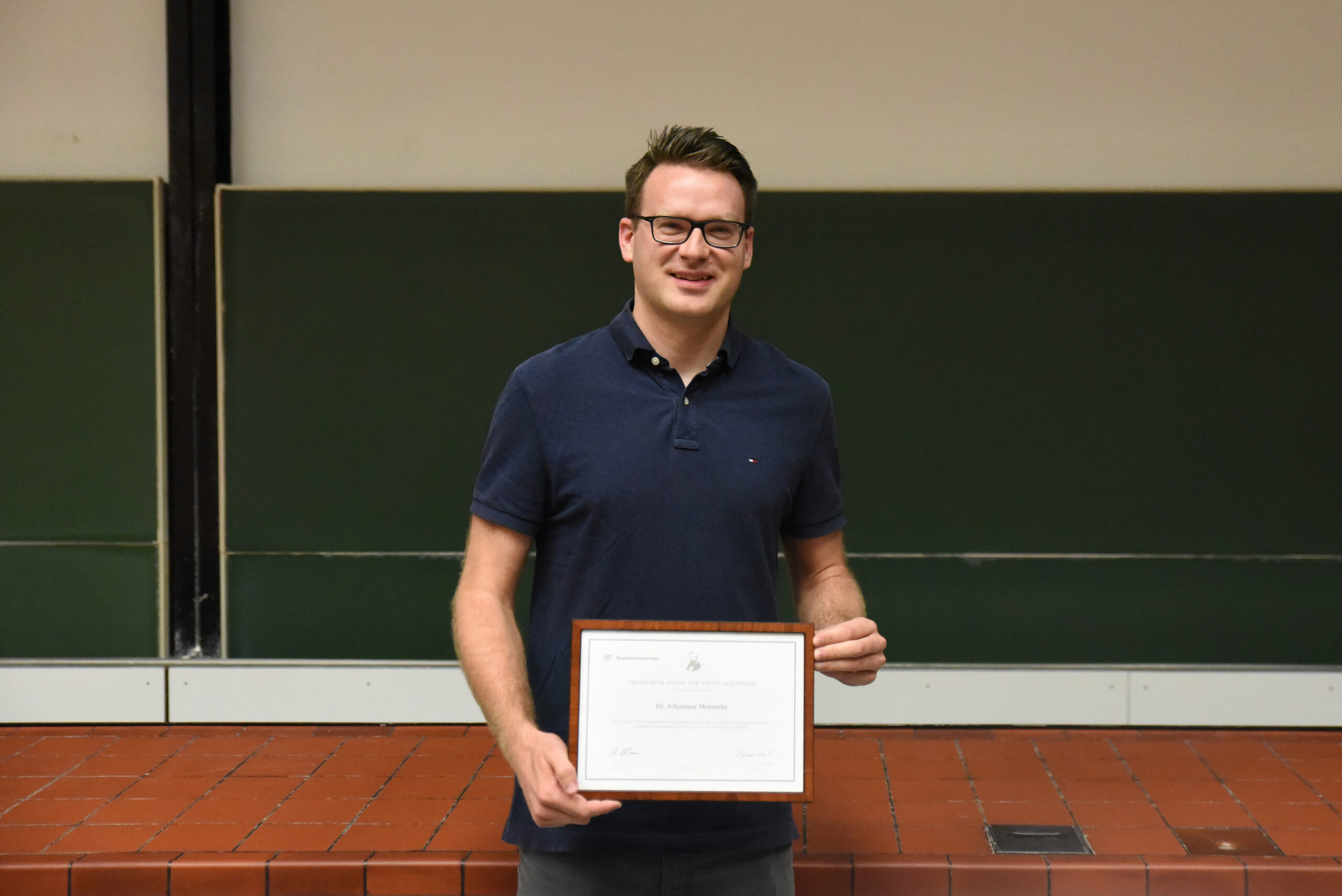7th International Symposium on Phospholipids in Pharmaceutical Research
Meeting Report
by PD Dr. habil. Simon Drescher (Phospholipid Research Center Heidelberg, Germany)
The Phospholipid Research Center Heidelberg (PRC) organized its “7th International Symposium on Phospholipids in Pharmaceutical Research” from 12–13 September 2022 at the University of Heidelberg, Germany. In addition, this symposium was also streamed in the virtual space due to the still ongoing pandemic situation. About 170 researchers from all over the world attended the meeting, in person and via the virtual meeting. In the seminars, international experts from academia and industry presented innovative and new applications of phospholipids, which were categorized into five topics: Advances in Gene Delivery – What comes next, RNA Vaccines and Analytics | Pathogens, Advances in Parenteral and Dermal Use of Phospholipids, Phospholipids in Industry, and Phospholipids in Cancer Treatment.
Download the Book of Abstracts.

Participants of the 7th International Symposium on Phospholipids in Pharmaceutical Research, Heidelberg 2022.
Session 1: Advances in Gene Delivery – What comes next?
The first day started with a session on gene delivery and the question, what might come after the mRNA-based COVID-19 vaccines. The session was chaired by Professor Dr. Alfred Blume (Martin Luther University Halle-Wittenberg, Germany), President of the Phospholipid Research Center. The first plenary lecture was given by Professor Dr. Dan Peer (Tel Aviv University, Israel) entitled “Targeted Lipid Nanoparticles Going Beyond the Liver: From Vaccines to Genome Editing”. In his talk, Prof. Peer summarized the development of nucleic acid-based tools to manipulate gene expression, such as siRNAs, mRNA and genome editing strategies, which can serve as a milestone in turning precision medicine feasible. He presented a self-assembled modular platform that enables to construct a theoretically unlimited repertoire of RNA-targeted carriers. The platform self-assembly is based on a membrane-anchored lipoprotein, incorporated into RNA-loaded novel unique lipid nanoparticles (LNPs) that interact with the antibody Fc domain.
The second plenary talk in this session was provided by Professor Dr. Jörg Huwyler (University of Basel, Switzerland). His lecture “Translational Models to Study Lipid-based Gene Delivery Systems” focused on the use of Zebrafish (Danio rerio) embryos, which serves as a vertebrate screening model to identify well tolerated LNPs with favorable pharmacokinetic properties and a high in vivo transfection efficiency. Most impressive, results in the zebrafish model do correlate with findings in higher vertebrates, indicating that the translational approach presented in Prof. Huwyler’s talk can be used to predict the in vivo performance of lipid-based delivery systems in higher species.
Presentation Prof. Dan Peer
Session 2: RNA Vaccines and Analytics | Pathogens
The second morning session, which was chaired by Dr. Peter Hölig (Lipoid GmbH, Ludwigshafen, Germany), started with a plenary lecture by Professor Dr. Giuseppe De Rosa (University of Naples Federico II, Italy) entitled “Lipid Nanoparticles for RNA Delivery: Can Self-Assembling Platform Foster Technology Transfer and Clinical Use”. Prof. De Rosa presented in his seminar an alternative to commonly used LNPs, which he termed lipid self-assembling nanoparticles (SANPs). These lipid SANP formulations have shown remarkable biocompatibility, high RNA encapsulation efficiency, and enhanced intracellular release. In addition, lipid SANP have been designed to be prepared at room temperature immediately before use by simple mixing of three components, namely, calcium/phosphate dispersion, RNA, and cationic liposomes. By using this approach, the RNA can be stored and used in a lyophilized form, which ensures greater stability against degradation compared to freezing, used for vaccines of Moderna and Pfizer/BioNTech.
The second plenary talk in the session was given by Professor Dr. Camilla Foged (University of Copenhagen, Denmark). In her lecture “Simultaneous Quantification of Multiple RNA Cargoes Co-Loaded into Nanoparticle-based Delivery Systems”, Prof. Foged described the development and validation of an ion-pair reversed-phase high-performance liquid chromatography combined with UV detection (IP-RP-HPLC-UV) for simultaneous quantification of single- and double-stranded RNA cargoes in LNPs.
However, we did not only invite experienced scientists to give a seminar. From all submitted abstracts for poster presentations, the Scientific Advisory Council of the PRC selected six of them to give a short talk. Dr. Jacinta O. Pinho (University of Lisbon, Portugal) presented the first short lecture on the topic of “Rifabutin Liposomes as an Effective Strategy to Overcome Antibiotic Resistance of Staphylococcus Aureus Infections”. She explained the design of so-called long-circulating liposomes composed of DMPC or DPPC, the negatively charged DMPG and DPPG, respectively, and PEGylated DSPE, which were loaded with rifabutin, an antibiotic approved for treatment of mycobacterial infections. Dr. Pinho convinced the audience that the incorporation of this antibiotic in liposomes is advantageous—compared to free rifabutin—, promoting a higher accumulation at infected sites, improving the interaction with bacterial membranes, and efficiently delivering rifabutin intracellularly, ultimately enhancing its concentration, at therapeutic levels, in diseased tissues.
This session closed with the second short talk given by Dr. Christian Nehls (Research Center Borstel, Germany). In his talk entitled “Membrane Interaction of Virulence Factors of Intracellular Pathogens Studied with Time-resolved and High-resolution Atomic Force Microscopy”, he showed how the spatially and temporally resolved visualization of interactions between intracellular pathogens (for example the mycobacterial lipid trehalose dimycolate and the virulence-associated Protein A of Rhodococcus equi.) with membranes can make a decisive contribution to an understanding of the underlying molecular mechanism—especially in the context of intracellular survival strategies of pathogens.
After these very interesting presentations, the auditorium moved to lunch and then to the presentation of the 40 poster contributions with inspiring discussions between all participants
Session 3: Advances in Parenteral and Dermal Use of Phospholipids
The first afternoon session on advances in parenteral and dermal applications of phospholipids was chaired by PD Dr. Peter van Hoogevest (PRC Heidelberg, Germany). The first invited talk in this session focused on how to expand the pharmaceutical use of phospholipids. Professor Dr. Karsten Mäder (Martin Luther University Halle-Wittenberg, Halle (Saale), Germany) explained in his lecture “Extending the Use of Phospholipids: Phospholipid Extrudates and Anti-inflammatory Phospholipid Dispersions” two major aspects of phospholipids. At first, phospholipids, having an excellent safety profile, can be used as solid and biodegradable injectable matrix for parenteral controlled applications. This field is currently dominated by PLA and PLGA polymers, having drawbacks such as the formation of highly acidic monomers and autocatalytic degradation mechanisms, which might lead to drug degradation prior release and paradox release profiles. Secondly, a highly attractive and yet largely unexplored aspect of phospholipids is their anti-inflammatory activity. Prof. Mäder compared and discussed the anti-inflammatory activity of different phospholipids (PS, PG) and presented various formulation strategies including the challenges of the development of long circulating anti-inflammatory PL dispersions.
The session continued with two short talks. The first talk was presented by Dr. Nesterkina (Helmholtz Institute for Pharmaceutical Research Saarland, Germany); she represented Professor Dr. Iryna Kravchenko, who was unable to give the talk herself. In her lecture “Effect of Novel Thermoresponsive Liquid Crystal Systems on Fluidity of Phospholipid Membranes”, Dr. Nesterkina presented results on the design and optimization of novel skin-permeability enhancers of natural origin. These systems are based on cholesteryl esters and mono-/bicycle terpenoids, respectively. The combination of both resulted in a decrease of the phase transition temperature of, e.g., DPPC model membranes and, hence, in a higher permeability of the membrane.
The second short talk was given by Professor Dr. Zhenpeng Qin (The University of Texas at Dallas, USA). In his lecture “Optical Control of Neuronal Activities with Photoswitchable Nanovesicles”, Prof. Qin presented results on the development of a photoswitchable nanovesicle with azobenzene-containing phosphatidylcholine (azo-PC). Irradiation with 365 nm light triggers the trans-to-cis isomerization of azo-PC, resulting in a disordered lipid bilayer with decreased thickness and cargo release. Most striking, irradiation with 455 nm light induces reverse isomerization and switches the release off. He concluded that these so-called azosomes showed promise in precise optical control over the molecular release and they could be a valuable tool for molecular neuroscience studies.
The session closed with another invited lecture given by Professor Dr. Enrico Mastrobattista (Utrecht University, the Netherlands). In his lecture “Osteoimmunomodulatory Liposome/GelMA Coatings for Orthopedic Implants”, he presented a versatile coating strategy to apply a hydrogel-based coating embedding intact liposomes on bone-implant surfaces. Two differently charged liposomes bearing anionic and cationic lipids, respectively, were blended with gelatin methacryloyl (GelMA) and coated by electrospraying and evaluated for their osteoimmunomodulatory effects. Prof. Mastrobattista convinced the audience that the low-dosage of released liposomes improved osteogenesis of titanium implants at the early stage of the bone healing process. These promising results pave the way to use liposome-releasing hydrogel coatings to load different types of therapeutic cargo for bone-implant applications.
Presentation Prof. Karsten Mäder
Presentation Dr. Nesterkina
Presentation Prof. Zhenpeng Qin
Presentatino Prof. Enrico Mastrobattista
Session 4: Phospholipids in Industry
The second afternoon session on phospholipids in industry was chaired by PD Dr. habil. Simon Drescher (PRC Heidelberg, Germany). Three invited speakers spoke on various aspects of phospholipids from an industrial perspective. The first was Dr. Michael Radius (Lipoid GmbH Ludwigshafen, Germany). In his online lecture “Quality Requirements for Phospholipid Excipients in Liposomal Formulations”, he firstly gave a comprehensive overview of phospholipids of various origins and their wide applicability for pharmaceutical, dermal and nutritional purposes. In the second part of the lecture, Dr. Radius covered the regulatory requirements and challenges for phospholipid excipients in liposomal formulations focusing on quality requirements and regulations from Europe and the US.
The second talk in this session was provided by Dr. Andreas Zumbühl (Acthera Therapeutics Ltd., Basel, Switzerland). In his presentation entitled “Mechanosensitive Liposomes”, he convinced the auditorium in a very descriptive manner how a special class of artificial phospholipids—1,3-diaminophospholipids—can be used to produce mechanosensitive liposomes. So-called faceted Hard-Shelled Liposomes (HSLs) are formed by this lipid, which react to pathologically high shear forces by releasing their encapsulated payload, with no release under usual blood flow conditions. This differentiated behavior makes the HSL an exclusive next generation system for the controlled and targeted drug delivery based on physics.
The session concluded with a lecture by Dr. Jayesh A. Kulkarni (NanoVation Therapeutics, Vancouver, Canada). In his talk “Structural Features of Lipid Nanoparticle Formulations of Nucleic Acid”, he proposed a mechanism of particle formation that is driven by the fusion of semi-stable precursor nanoparticles to form the final morphology of lipid nanoparticle (LNP) systems. LNP formulations of nucleic acid have established clinical utility and are the enabling technology of the leading vaccines against COVID-19, and of Onpattro®, the first-ever FDA-approved RNA therapeutic. Dr. Kulkarni also discussed how these findings can be leveraged for rational design of extrahepatic nucleic acid delivery.
Life Award Ceremony
The first day of the symposium concluded with a highlight: the presentation of this-year’s Thudichum Life Award. Professor Dr. Yechezkel (Chezy) Barenholz from Hebrew University, Israel, gave a short introductory lecture on Johann Ludwig Wilhelm Thudichum (1829-1901), the famous German/English physician and biochemist, who isolated and characterized numerous compounds of the brain for the first time, including phospholipids and related species. He was one of the very first to recognize the physiological importance of phospholipids.
Afterwards, Prof. Barenholz continued with a laudatory speech on this year’s awardee: Professor Dr. Pieter Cullis (University of British Columbia, Vancouver, Canada). Prof. Cullis receives the award for his lifelong and outstanding achievements in the field of phospholipid research.
Prof. Cullis is probably most famous for the development the first-ever FDA-approved RNA therapeutic Onpattro®. This work, which was done in great collaboration with Drew Weismann, Katalin Kariko and many, many others, laid the foundation for the BioNTech/Pfizer and Moderna vaccine against COVID-19 based on the mRNA-lipid nanoparticle (LNP) technology. But Prof. Cullis' work in the field of phospholipids started much earlier. Together with Ben de Kruijff (Utrecht University) and Mick Hope he investigated divers (basic) problems concerning membrane lipids: Why are so many different lipids there? Why do they adopt different three-dimensional structures? What are the consequences of asymmetric lipid distributions in biological membranes? By answering these and many other questions, he established the foundations of the “molecular shape concept” of phospholipids, predicting whether phospholipids can adopt a micellar, hexagonal, or bilayer phase. In later years, this concept could be transferred to cationic and pH-sensitive ionizable phospholipids, which finally culminated in the design of RNA/LNP constructs enabling the escape of RNA into the cytosol. Prof. Cullis’ career is a remarkable and impressive example of translation of basic research findings into highly interesting (phospho)lipid carriers with immense medical impact.
The first day of the symposium closed with a joint dinner linked with a variety of discussions.
Presentation Prof. Pieter Cullis

Professor Dr. Pieter Cullis (L) honored with the 2022 Thudichum Life Award by Yechezkel (Chezy) Barenholz (R), Thudichum Life Awardee 2019.
Young Session – Poster Award
The second day of our symposium started with the Young Session, which was chaired by Professor Dr. Paola Luciani (University Bern, Switzerland). Most of the projects funded by the Phospholipid Research Center were represented during the event. The Scientific Advisory Council selected six presenters from all poster abstracts to give a flash talk, that is a very short presentation on the corresponding research. Three out of these six received the Poster Award, presented by Prof. Luciani, and they were each awarded a € 500 prize:
- Claudia Lotter (University of Basel, Department of Pharmaceutical Sciences, Basel, Switzerland): Incorporation of Phosphatidylserine Improves Efficiency of Lipid Based Gene Delivery Systems.
- Eleni Papadopoulos (Ludwig-Maximilians-University Munich; Department of Pharmacy; Pharmaceutical Technology and Biopharmacy; Munich, Germany): Lyso-lecithins for the Interfacial Stabilization of Parenteral Protein Formulations.
- Finja Marie Witt (University of Innsbruck, Michael Popp Institute, Center for Molecular Biosciences Innsbruck (CMBI), Innsbruck, Austria): Algae as Renewable and Cost-efficient Source of ω3 Fatty Acid-containing Phosphatidylcholines with Anti-leukemic Properties.

Winners of the three Poster Prizes 2022. From left to right: Ms. Finja Marie Witt, Professor Dr. Paola Luciani, Ms. Claudia Lotter, and Ms. Eleni Papadopoulos.
Session 5: Phospholipids in Cancer Treatment
The last session on phospholipids in cancer treatment, chaired by Professor Dr. Gert Storm (Utrecht University, the Netherlands), started with an invited lecture on “Spatiotemporal Controlled Drug Delivery with Light- and Radiotherapy-responsive Liposomes”. Dr. Mans Broekgaarden (Institute for Advanced Biosciences, University Grenoble-Alpes, France) provided in his presentation important new insights into the role of specific lipids in achieving light- and radiotherapy-controlled drug release, capable of increasing tumor permeability by excessive oxidative damage to the cancer microenvironment. Light-controlled drug delivery could be achieved by incorporating porphyrin dyes in the lipid bilayer of liposome. To achieve radiation-controlled liposomal drug delivery, the liposome formulation for light-controlled drug release was adapted and radio-catalytic gold nanoclusters were introduced into the lipid bilayer. When successful, the radiotherapy-controlled drug release and increased permeability of tumor tissues may significantly advance the standard-of-care for many cancer patients.
The next short talk was presented by Dr. Maria Manuela Gaspar (University of Lisbon, Portugal). In her talk “Liposomes as a Successful Tool for Colon Cancer Management: Exploring Metal-based Complexes as Aquaporin Inhibitors”, she presented her research on a Cu-based phenanthroline complex, which was tested and validated as in vitro aquaporin3 inhibitor. Moreover, to improve the biodistribution profile of this complex and accumulation at tumor sites in vivo, the incorporation of the Cu-complex in long circulating liposomes with pH sensitive properties was performed. Overall, Dr. Gaspar convinced the audience that her study represented a step forward in the development of a pH-sensitive nanotherapeutic strategy for colon cancer management via aquaporin3 inhibition.
The next plenary lecture was provided by PD Dr. Michele Bernasconi (Insel University Hospital, Bern, Switzerland) about “Liposomal Vincristine Delivery Targeted to Pediatric Rhabdomyosarcoma”. He showed in his presentation, how liposomal formulations can decrease systemic side effects by passive accumulation through the enhanced permeation and retention (EPR) effect. Dr. Bernasconi and his team also investigated the possibility to further increase local drug concentration, and to overcome the clinical limitations of the EPR effect, by targeting liposomes to the tumor site using different ligands, such as peptides or nanobodies. In vitro binding of liposomes to rhabdomyosarcoma could be dramatically increased by some of these ligands.
The next short presentation was given by Luís Silva (Uppsala University, Sweden) about “Lipodisks for Dual Delivery of Chemotherapeutic Drugs and Anti-cancer Peptides”. The lipodisks, a novel type of drug carrier that is formed upon increasing amount of PEGylated phospholipids, were studied to assess their potential as nanocarrier for the dual delivery of chemotherapeutic drugs, doxorubicin in this case, and anti-cancer peptides. An important objective was to explore potential synergistic effects between the drug and peptide, not only to increase the toxicity to cancer cells but also to help overcome some of the most common drug resistance mechanisms.
The last talk in this session was provided by Professor Dr. Andreas Koeberle (University of Innsbruck, Austria). In his plenary lecture “Multiomics-assisted Discovery of Cell Fate‐determining Phospholipids with Potential in Supportive Anti-leukemic Therapy”, he pointed out a prominent role of phospholipid metabolism in cell cycle and cell death control. By exposing fibroblasts to cytotoxic natural products and applying comparative lipidomics/proteomics, Prof. Koeberle and his team aimed at discovering overarching (phospho)lipid-regulatory mechanisms that determine cell fate. For example, he reported on changes in PUFA phospholipid metabolism during cell death initiation that render cells sensitive to oxidative membrane modification at the crossroad of apoptosis and alternative cell death programs. He concluded that the use of the mechanistic diversity of cytotoxic natural products to unravel by functional multiomics overriding phospholipid-controlled mechanisms as promising targets for supportive anti-leukemic therapy.
Presentation Dr. Mans Broekgaarden
Presentation Dr. Maria Manuela Gaspar
Presentation PD Dr. Michele Bernasconi
Presentation Luís Silva
Presentation Prof. Andreas Koeberle
Thudichum Young Scientist Award
Our symposium concluded with the presentation of the Thudichum Young Scientist Award. The Phospholipid Research Center confers the Thudichum Award for Young Scientists for their excellent publications on phospholipid research. The winner received € 5,000 for the achievements, and the award was presented by Professor Dr. Paola Luciani, member of the Scientific Advisory Council of the Phospholipid Research Center.
This year, the members of the scientific committee awarded the Thudichum Young Scientist Award to Dr. Johannes Morstein (University of California in San Francisco, USA). Dr. Morstein was honored for his outstanding and original contributions to the development and application of photoswitchable phospholipids. Using different diazo-benzene containing phospholipids, the optical control of various signaling pathways in cells and the light-triggered drug release were possible.

The Winner of the Thudichum Young Scientist Award 2022: Dr. Johannes Morstein.
Conclusion and Thanks
After a three-year break and an online symposium in 2021, this was a very successful hybrid symposium. The success of the 7th International Symposium on Phospholipids in Pharmaceutical Research in 2022 was based on the many creative minds and inspiring scientists who demonstrated the numerous versatile applications of phospholipids in pharmaceutical research and development.
The author would like to acknowledge all the speakers, the poster authors, the chairs, the Scientific Advisory Council, and the Heidelberg University (students of Prof. Gert Fricker) for their excellent support. Special thanks go to Ms. Britta Merz and Ms. Ina von Jeinsen for their contributions to the outstanding organization and coordination of the symposium.
Finally, we would also thank all participants on-site and online for their enthusiastic contributions! We’ll see each other again in 2024!
Jury
The jury for the Life Award consists of members from the Scientific Advisory Council and the Board of the PRC; the jury for the Young Scientist Award consists of members from the Scientific Advisory Council.
The Board
- Prof. Dr. Alfred Blume
- Prof. Dr. Gert Storm
- Dr. Peter Hölig
Scientific Advisory Council 2022
- Prof. Dr. Alfred Blume
- Prof. Dr. Gert Fricker
- Dr. Peter Hölig
- Prof. Dr. Andreas Koeberle
- Prof. Dr. Judith Kuntsche
- Prof. Dr. Paola Luciani
- Dr. Frank Martin
- Dr. Ralf-Olaf Quinkert
- Prof. Dr. Gert Storm
- PD Dr. Peter van Hoogevest
Management PRC
- PD Dr. habil. Simon Drescher
- Ms. Britta Merz

